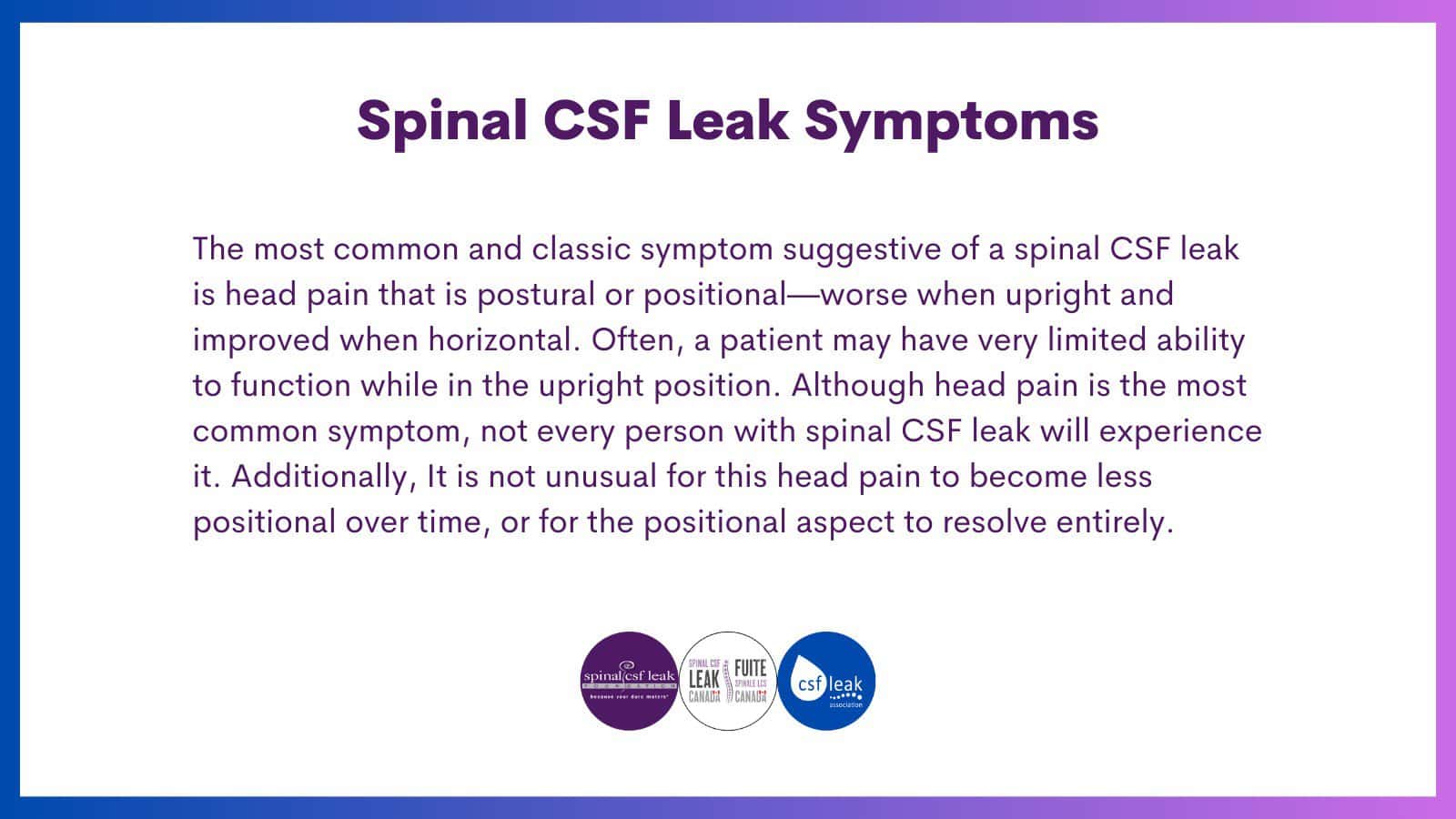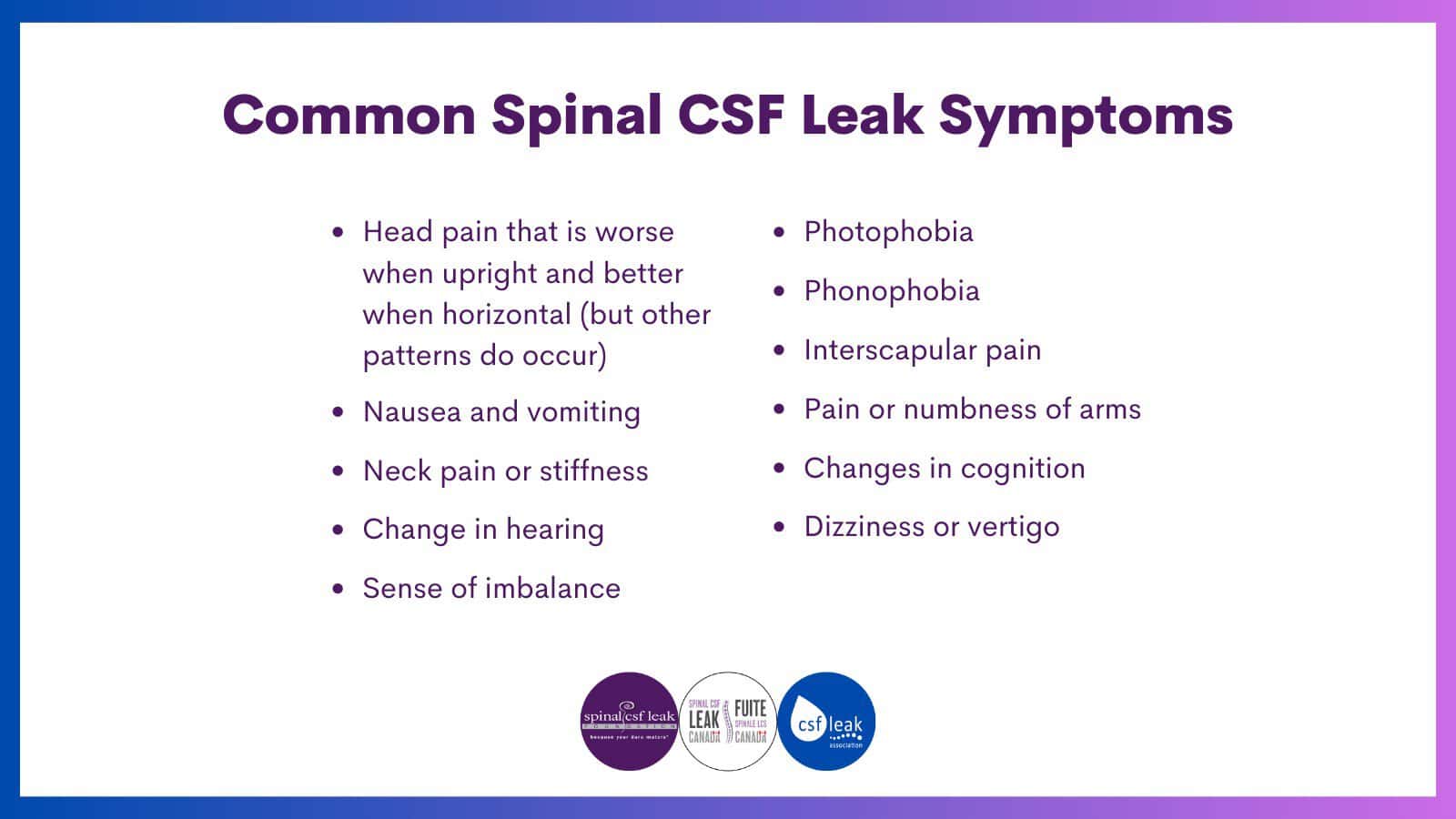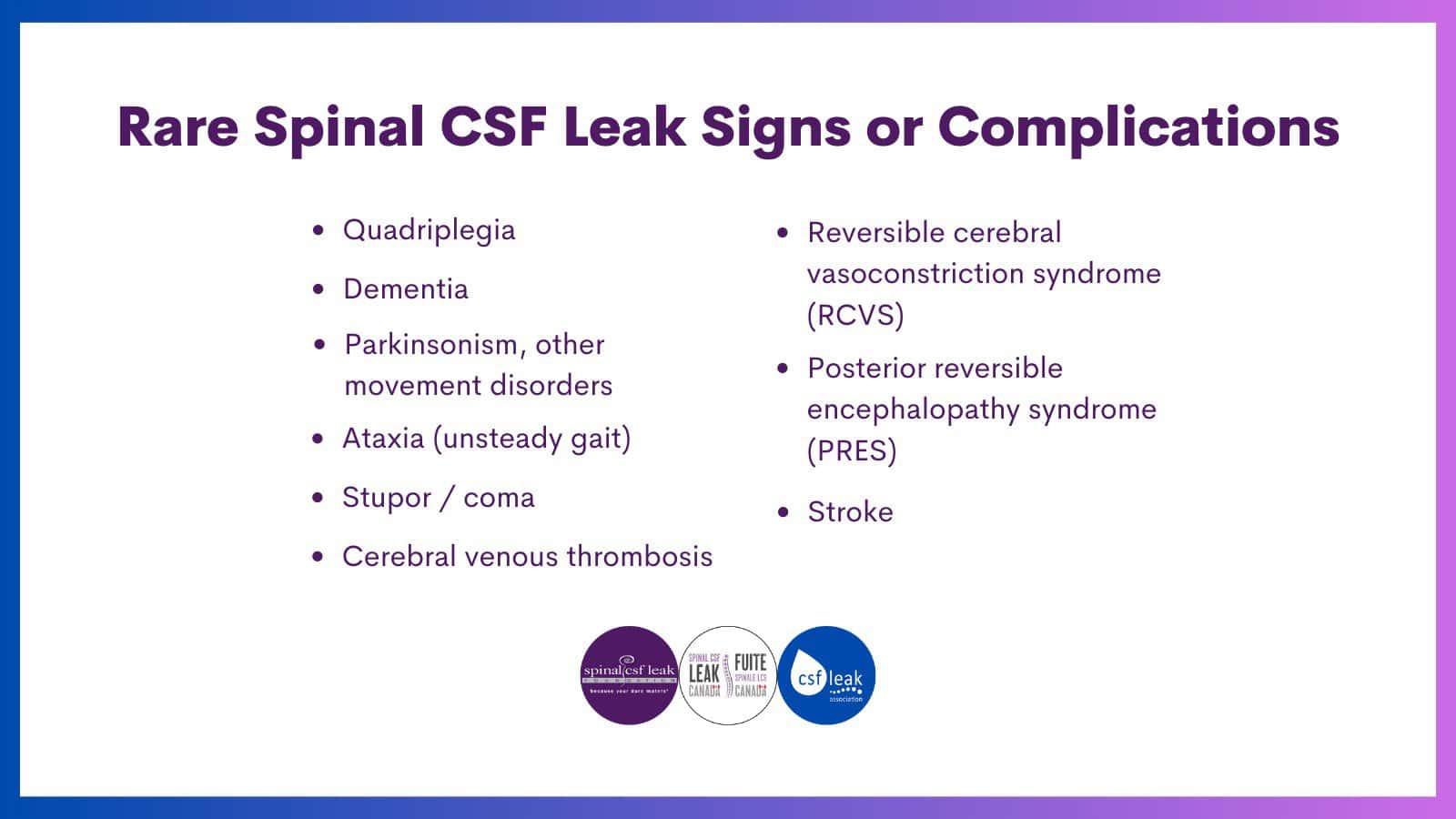LeakWeek Day Two: Symptoms
The most common symptom: Positional head pain
The most common and classic symptom indicating a spinal CSF leak is a type of head pain that is related to posture or position, called “orthostatic” (from the Greek orthos, meaning “upright,” and histanai, meaning “to stand”). This means that the head pain is worse when a person is upright and improves when they lie down. Some people may experience head pain right after waking up or getting up, while for others there may be a delay before the pain starts after being upright. In some cases, the pain may begin many hours after being upright, known as an “end of the day” headache. It’s worth noting that not all patients with orthostatic head pain have a spinal CSF leak and not all headaches related to spinal CSF leaks are positional.
The head pain that often accompanies a spinal CSF leak is commonly felt at the back of the head, but it can also occur in the front, on both sides, or all over the head. It may even involve the face. Sometimes, the pain extends to the neck and the area between the shoulder blades, which is known as a “coat hanger” headache. The severity of the head pain can vary greatly, ranging from mild to severe, and it may not necessarily correlate with findings on brain imaging. The nature of the pain can also be quite variable, with sensations such as pulling, aching, throbbing, or burning. Many individuals with a spinal CSF leak find it challenging to function while upright, which significantly impairs their daily activities.
The head pain associated with spinal CSF leak often worsens with regular physical activity and can be accompanied by neck pain, sensitivity to light, sensitivity to noise, nausea, and vomiting—similar to the symptoms experienced during a migraine. Therefore, if the positional aspect of the headache is not present or recognized, and the accompanying non-headache symptoms are not identified, patients may be misdiagnosed with chronic migraine.
Although head pain is the most common symptom, not everyone with a spinal CSF leak will experience it. In fact, CSF leaks can cause various signs and symptoms besides headaches. Recognizing the pattern of headaches and other symptoms is crucial for clinicians and patients to consider the possibility of intracranial hypotension due to a spinal CSF leak.
Here are some other symptoms of spinal CSF leak, from common to rare.
Common symptoms include: headache that is worse when upright and better when horizontal (but other patterns do occur); nausea and vomiting; neck pain or stiffness; change in hearing (muffled, underwater, tinnitus); sense of imbalance; hotophobia (sensitivity to light); phonophobia (sensitivity to sound); interscapular (between shoulder blades) pain; pain or numbness of arms; changes in cognition (“brain fog”); dizziness or vertigo.
Less common symptoms include: Visual changes (blurring, double vision, visual field defects); facial numbness or pain; changes in taste; pain or numbness at various nerve root levels below the arms; fatigue; galactorrhea (fluid discharge from nipples).
Rare signs or complications of spinal csf leak include: Quadriplegia; dementia; parkinsonism, other movement disorders; ataxia (unsteady gait); stupor/coma; cerebral venous thrombosis; reversible cerebral vasoconstriction syndrome (RCVS); posterior reversible encephalopathy syndrome (PRES); stroke.
Coming up tomorrow:
We share and discuss causes of spinal CSF leak.
Further information:
Spinal CSF Leak symptoms main page (Spinal CSF Leak Foundation)




